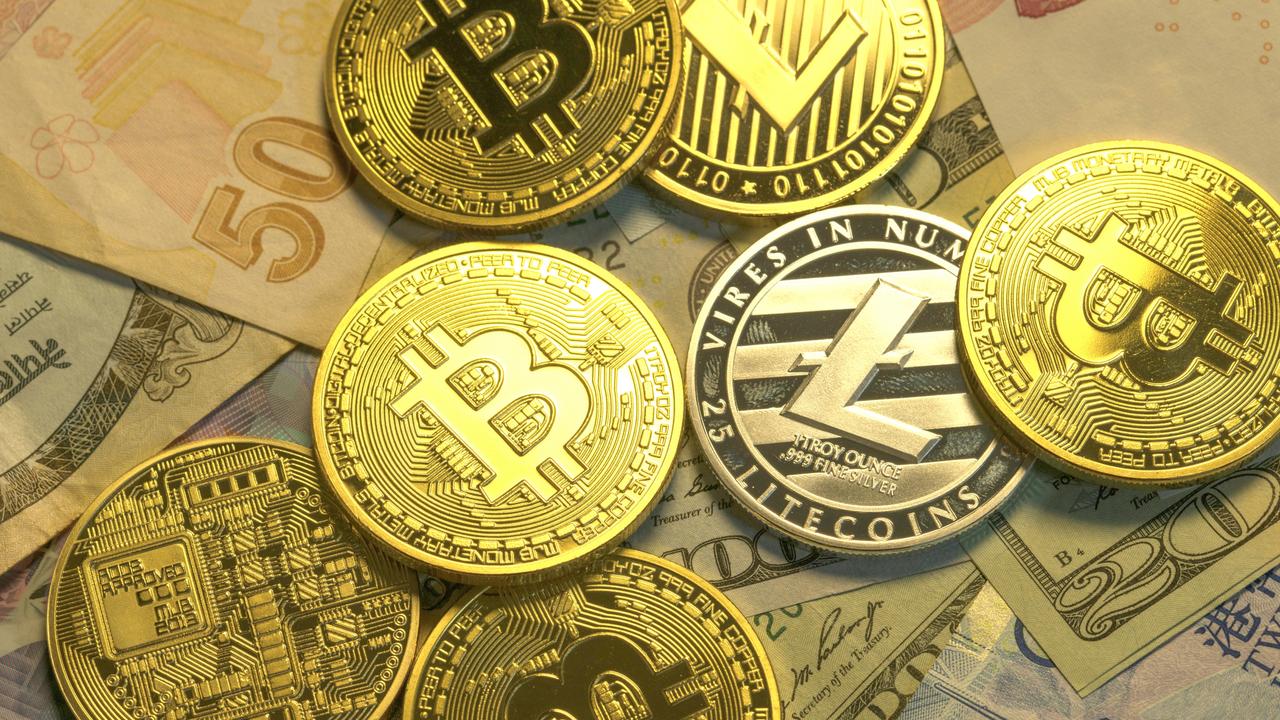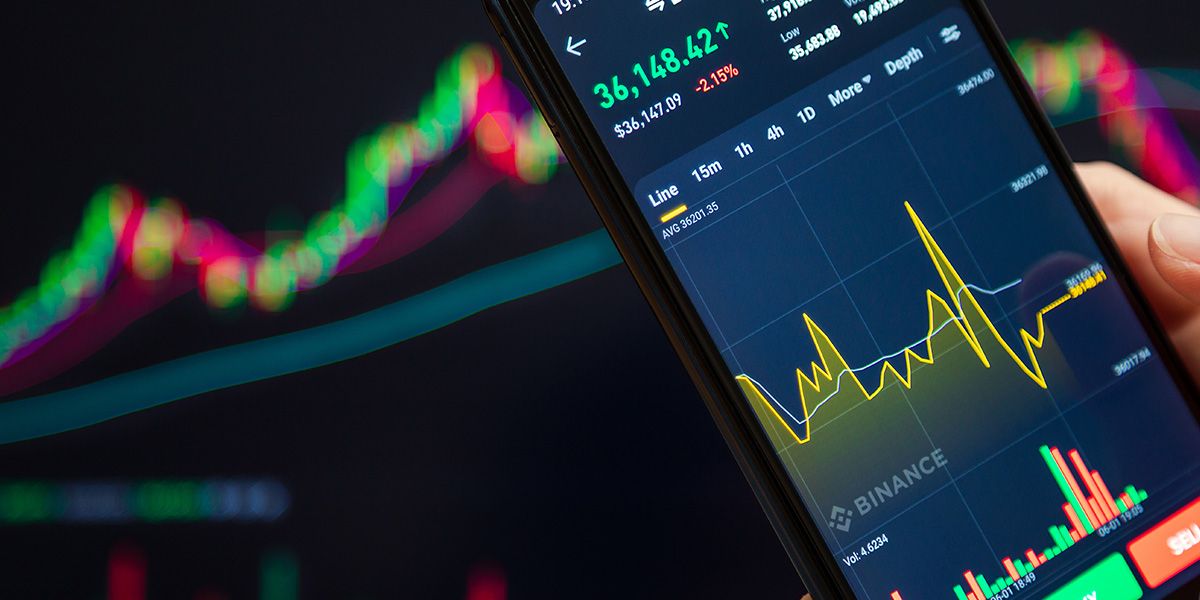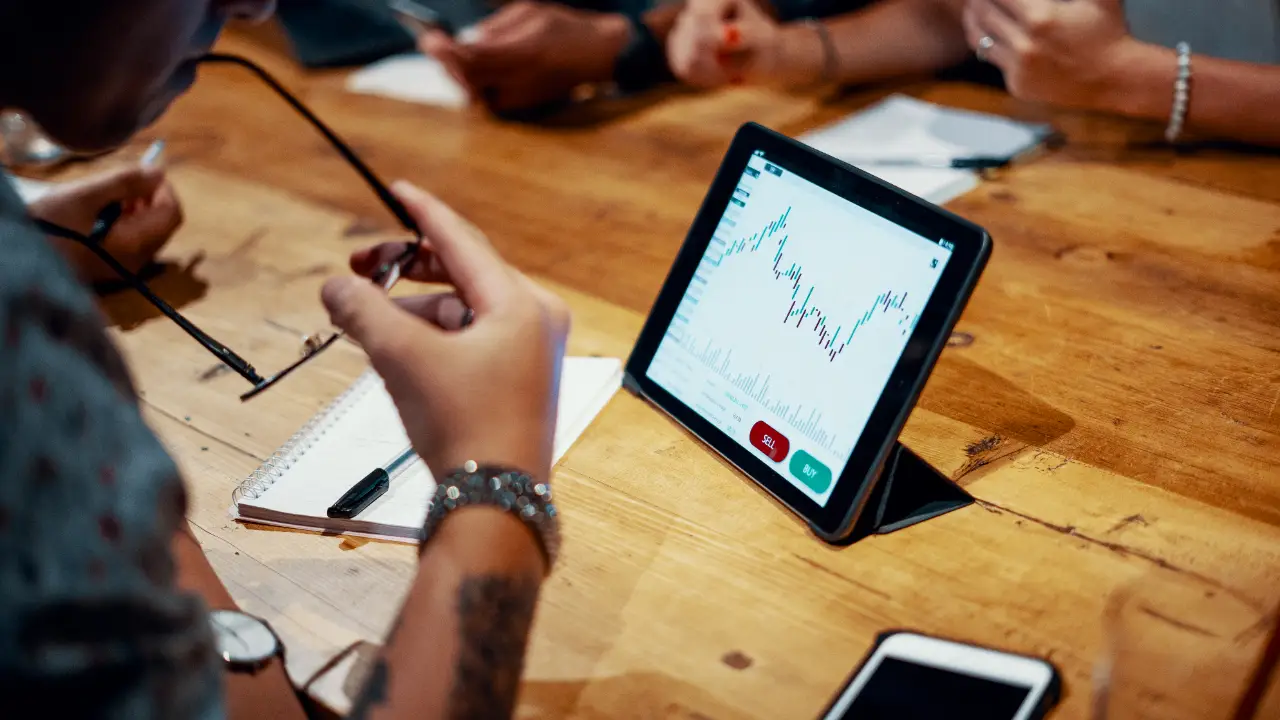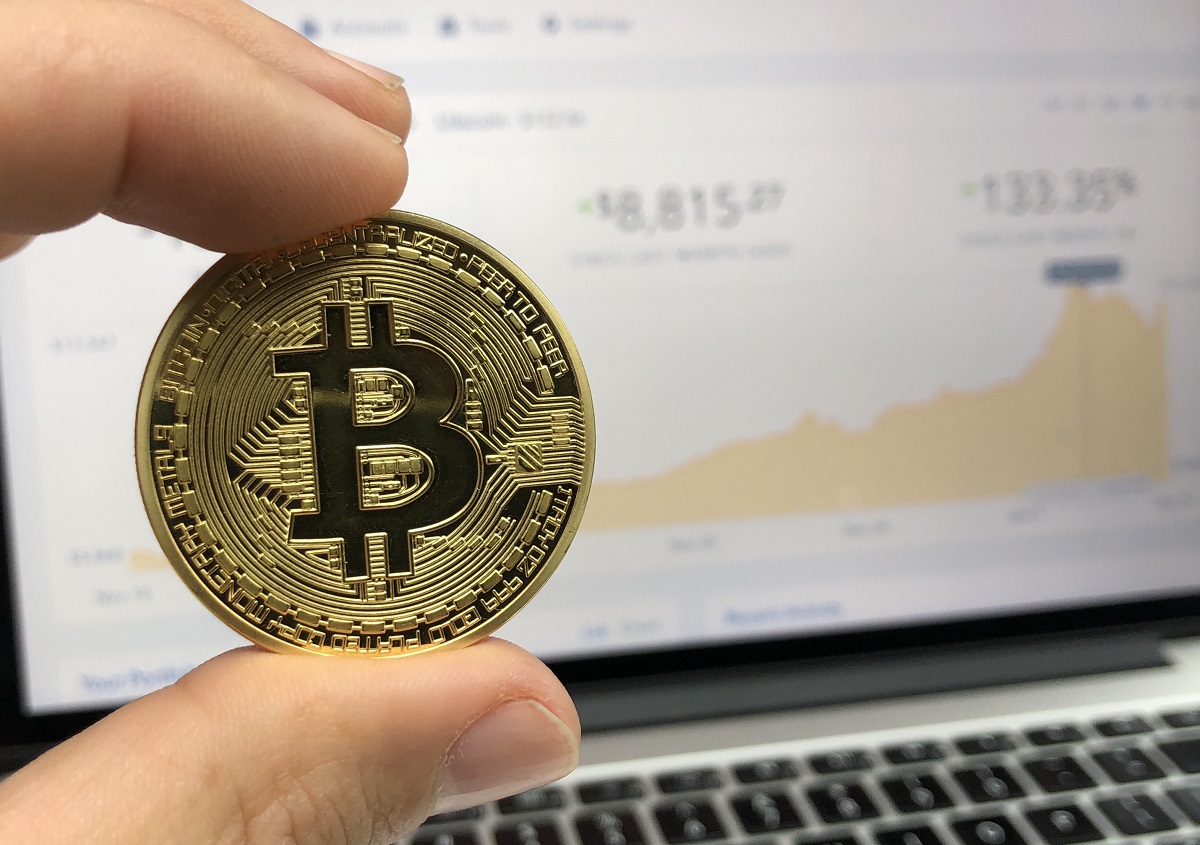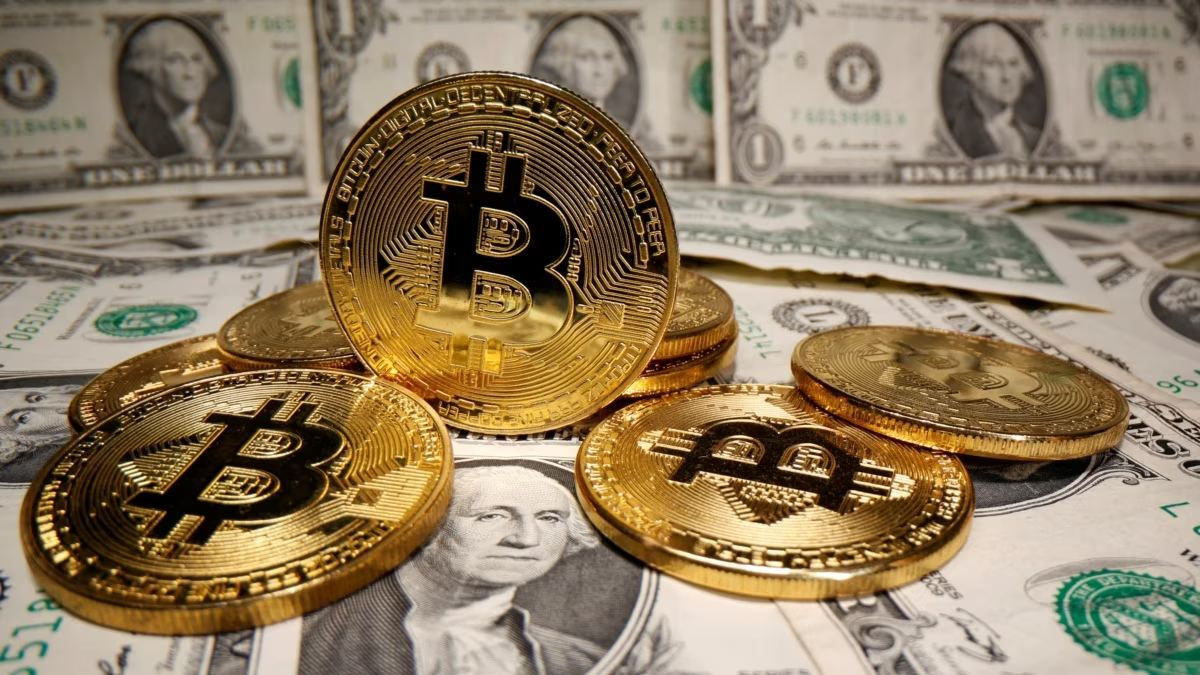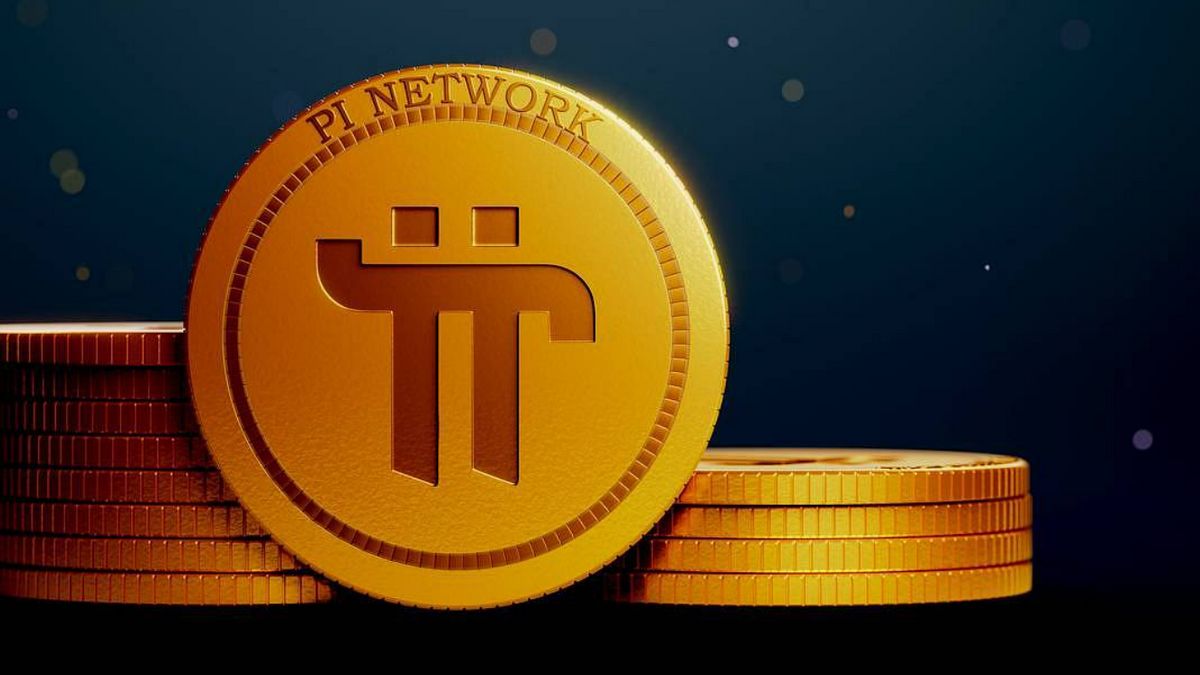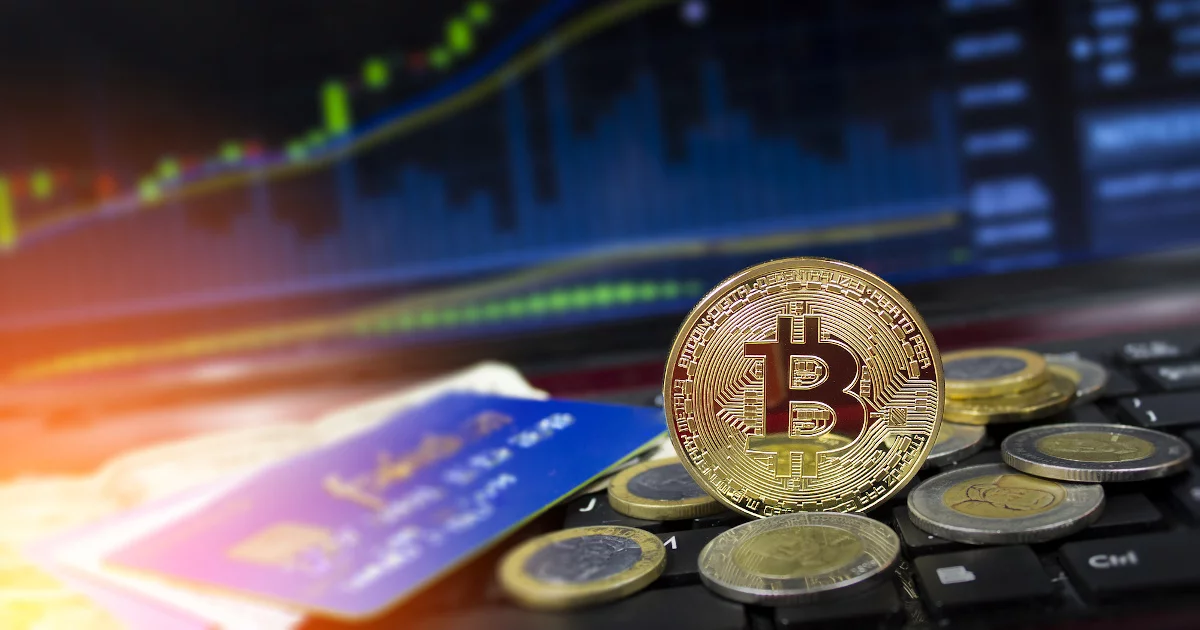Introduction
Digital currency, also known as cryptocurrency, has become a popular and widely talked-about topic in recent years. Its decentralized and secure nature has attracted the attention of individuals, businesses, and investors worldwide. But what exactly is digital currency, and how can you get started with it?
At its core, digital currency is a form of virtual money that exists solely in electronic form. Unlike physical currencies such as banknotes or coins, digital currencies are stored electronically and can be transferred or used for various transactions using the internet.
The appeal of digital currency lies in its ability to provide secure and private transactions. It operates using blockchain technology, which is a decentralized and transparent digital ledger that records all transactions made with the currency. This ensures that transactions are traceable, secure, and free from interference or manipulation.
There are many different types of digital currencies available today, with some of the most well-known being Bitcoin, Ethereum, and Litecoin. Each of these currencies operates on its own unique blockchain and has its own set of features and uses.
In this article, we will explore the world of digital currency and guide you through the process of getting started with it. Whether you’re looking to invest, make online purchases, or simply gain a better understanding of this exciting new technology, we’ve got you covered.
To embark on your digital currency journey, it’s important to have a clear understanding of the different types of digital currencies available. We’ll explore their features and uses, helping you make an informed decision on which type of digital currency best suits your needs.
Once you’ve chosen the right digital currency, you’ll need to set up a digital wallet to store it securely. We’ll provide you with step-by-step instructions on how to set up a digital wallet, ensuring that your funds are safe and easily accessible.
Next, we’ll delve into the world of digital currency exchanges, where you can buy, sell, and trade various cryptocurrencies. We’ll discuss the criteria to consider when choosing an exchange and provide recommendations for reputable platforms.
With your digital wallet set up and an exchange selected, you’ll be ready to purchase your chosen digital currency. We’ll guide you through the process, sharing tips and precautions to ensure a smooth and secure transaction.
Once you have acquired your digital currency, it’s important to understand how to store and secure it. We’ll explore different strategies and tools to safeguard your funds from potential threats and provide peace of mind.
Finally, we’ll discuss the practical uses of digital currency and how you can make the most of it in your everyday life. From online shopping to donations and investments, we’ll explore the various ways you can utilize digital currency to meet your financial goals.
Whether you’re a beginner or already have some experience with digital currency, this comprehensive guide will provide you with the knowledge and tools you need to navigate the world of cryptocurrency with confidence. Let’s dive in!
Understanding Digital Currency
Digital currency, also known as cryptocurrency, is a type of virtual or digital money that exists solely in electronic form. It operates independently of central banks and governments, utilizing cryptography for secure transactions and control of new unit creation. To understand digital currency, it’s important to explore its key characteristics and how it differs from traditional forms of currency.
One of the fundamental aspects of digital currency is its decentralized nature. Unlike traditional forms of currency that are regulated and controlled by central authorities, digital currencies operate on a decentralized network called blockchain. This means that no single entity has control over the currency, making it more democratic and resistant to censorship.
Another essential element of digital currency is its use of cryptography. Cryptography ensures the security and integrity of transactions and prevents unauthorized access or fraud. Through complex algorithms, cryptography encrypts and protects the transfer of digital currency, ensuring that it is secure and anonymous.
Digital currency also offers a level of transparency that is unparalleled in traditional financial systems. All transactions made with digital currency are recorded on the blockchain, a public and immutable ledger. This transparency serves as a safeguard against fraud and manipulation, as anyone can access and verify the transactions.
Furthermore, digital currencies have a finite supply, which distinguishes them from traditional currencies that can be printed or minted as needed. For example, Bitcoin has a maximum supply cap of 21 million coins. This feature ensures scarcity and protects the value of the currency from inflation.
One of the main advantages of digital currency is its accessibility and ease of use. Anyone with internet access can participate in digital currency transactions, regardless of their geographical location. This opens up new opportunities for financial inclusion, particularly for those without access to traditional banking systems.
Digital currency also enables fast and efficient cross-border transactions. Traditional international transfers can be slow, expensive, and subject to intermediaries. With digital currency, transfers can be completed within minutes and at a fraction of the cost, revolutionizing the way people send and receive money globally.
It’s important to note that the value of digital currency can be highly volatile. Cryptocurrencies like Bitcoin and Ethereum have experienced significant price fluctuations over the years. This volatility can present both opportunities and risks for investors and users of digital currency.
Understanding the basics of digital currency is essential before venturing into the world of cryptocurrency. Armed with this knowledge, you’ll be better equipped to make informed decisions and navigate the exciting opportunities that digital currency presents.
Different Types of Digital Currency
There are numerous types of digital currencies available in the market, each with its own unique features and uses. Understanding the different types is crucial in selecting the right digital currency for your needs. Let’s explore some of the most popular options:
1. Bitcoin (BTC): Bitcoin was the first decentralized digital currency introduced in 2009. It operates on a peer-to-peer network and is widely recognized as the pioneer of cryptocurrencies. Bitcoin is known for its limited supply and high value, making it a popular choice for investment and online transactions.
2. Ethereum (ETH): Ethereum is more than just a digital currency; it is also a platform for building decentralized applications (DApps) and smart contracts. Ethereum introduced the concept of programmable blockchain, enabling developers to create and deploy their own decentralized applications.
3. Ripple (XRP): Ripple aims to revolutionize the traditional banking system by facilitating fast and low-cost international money transfers. It provides a decentralized platform for secure and instant cross-border transactions, making it a popular choice for banks and financial institutions.
4. Litecoin (LTC): Created by a former Google engineer, Litecoin shares many similarities with Bitcoin but offers faster block generation times and a different hashing algorithm. Litecoin is often considered as the “silver” to Bitcoin’s “gold,” and it has gained popularity as a cheaper and quicker alternative for transactions.
5. Bitcoin Cash (BCH): Bitcoin Cash is a digital currency that was created as a result of a hard fork from Bitcoin. It aims to solve some of the scalability issues of Bitcoin by increasing the block size, allowing for more transactions to be processed in each block.
6. Stellar (XLM): Stellar is a decentralized platform that facilitates fast and low-cost cross-border transactions. It focuses on providing financial services to the unbanked and underbanked populations, with the goal of creating a more inclusive and accessible financial system.
7. Cardano (ADA): Cardano is a blockchain platform that aims to provide a secure and scalable infrastructure for the development of decentralized applications and smart contracts. It emphasizes rigorous academic research and peer-reviewed development to ensure high levels of security and innovation.
These are just a few examples of the wide range of digital currencies available today. Each digital currency has its own unique strengths, weaknesses, and use cases. It’s important to research and understand the specific characteristics of each digital currency before making any investment or transaction.
As the digital currency market continues to grow and evolve, new cryptocurrencies will emerge, offering innovative solutions and features. By staying informed and keeping up with the latest developments, you can make informed decisions and leverage the benefits of digital currency to meet your financial goals.
Choosing the Right Digital Currency
With the plethora of digital currencies available, choosing the right one can be a daunting task. Your choice will depend on several factors, including your investment goals, risk tolerance, and the purpose for which you plan to use digital currency. Here are some considerations to help you choose the right digital currency:
1. Research the purpose and goals: Each digital currency serves a unique purpose and has specific goals. Some focus on fast and cheap transactions, while others prioritize privacy or smart contract capabilities. Research the underlying technology and features of different digital currencies to see if they align with your needs and priorities.
2. Understand market capitalization and liquidity: Market capitalization refers to the total value of a digital currency in circulation. Higher market capitalization generally indicates greater liquidity and stability in the market. Consider the liquidity of a digital currency, as higher liquidity means you can buy or sell your coins without significantly impacting the market price.
3. Assess the team and community: The success and longevity of a digital currency often depend on the competency and dedication of its development team and the vibrancy of its community. Look into the backgrounds and experience of the team members behind the digital currency, as well as the level of engagement and support from the user community.
4. Evaluate security measures: Security should be a top priority when choosing a digital currency. Assess the security protocols and measures implemented by the cryptocurrency’s network and development team. Consider factors such as the history of security breaches, transparency in code audits, and the reputation of the security measures.
5. Consider regulatory environment: Different countries have varying regulations and legal frameworks around digital currencies. Be aware of the regulatory environment in your jurisdiction and how it may affect the use and trading of digital currencies. Look for digital currencies that are compliant with relevant regulations to avoid potential legal issues.
6. Examine historical performance: While past performance is not a guarantee of future success, analyzing the historical performance of a digital currency can provide insights into its stability and growth potential. Consider factors such as price volatility, growth patterns, and historical market trends to make an informed decision.
7. Seek professional advice: If you’re new to digital currency or unsure about making investment decisions, it’s advisable to seek guidance from financial professionals or cryptocurrency experts. They can offer valuable insights and help you navigate the complexities of the digital currency market.
Taking the time to research, analyze, and evaluate different digital currencies will help you choose the right one that aligns with your goals and preferences. Remember that the digital currency market is constantly evolving, so it’s important to stay informed and adapt your investment strategy accordingly. By considering these factors, you can make an informed decision and embark on your digital currency journey with confidence.
Setting Up a Digital Wallet
A digital wallet is essential for storing and managing your digital currency securely. It acts as a virtual bank account, allowing you to send, receive, and store your digital currencies. Setting up a digital wallet is relatively straightforward, and here are the steps to get started:
1. Choose the right wallet: There are different types of digital wallets available, including software wallets, hardware wallets, and online wallets. Software wallets are phone or computer applications, hardware wallets are physical devices, and online wallets are web-based platforms. Research and choose the wallet type that suits your needs in terms of security, accessibility, and convenience.
2. Download or purchase the wallet: Once you have decided on the wallet type, you can proceed to download the software wallet or purchase the hardware wallet. For software wallets, visit the official website or app store of the chosen wallet to download it. For hardware wallets, purchase it from trusted retailers or authorized resellers.
3. Install and set up the wallet: If you have opted for a software wallet, follow the instructions provided by the wallet provider to install the software on your chosen device. For hardware wallets, connect it to your computer or mobile device as per the manufacturer’s instructions. Once installed or connected, you can follow the on-screen prompts to set up your wallet, including creating a strong password or PIN.
4. Secure your wallet: Proper security measures are crucial to protect your digital currencies. Enable any available security features provided by the wallet, such as two-factor authentication (2FA) or biometric authentication. Backup your wallet’s private keys or recovery phrase in a secure location, preferably offline, to ensure you can restore your wallet if needed.
5. Add digital currencies to your wallet: Each wallet will have its own process for adding digital currencies. Typically, you will find an option to “receive” or “add” coins within the wallet interface. Use the generated wallet address or QR code to receive digital currencies into your wallet. Make sure to double-check the recipient address when making transactions.
6. Keep your wallet up to date: Wallet providers regularly release updates to improve security and add new features. It is crucial to keep your wallet software or firmware up to date by installing the latest updates. Often, wallet updates will include important security patches or bug fixes that ensure the safety of your digital currencies.
7. Test your wallet: Before transacting with larger amounts of digital currency, it is recommended to do a test transaction with a small amount. Send a small amount of digital currency to another wallet or exchange, then verify that the transaction is successful and the funds have been received. This helps ensure that your wallet is working correctly.
Remember, be cautious while setting up and using your digital wallet. Avoid sharing your wallet credentials, keep your wallet software or firmware up to date, and be aware of potential phishing attempts or scam websites. By following these steps and practicing good security habits, you can set up a digital wallet that allows you to securely store and manage your digital currency.
Finding a Digital Currency Exchange
A digital currency exchange is an online platform where you can buy, sell, and trade various cryptocurrencies. Finding a reliable and reputable exchange is essential to ensure a safe and seamless trading experience. Here’s what you need to consider when looking for a digital currency exchange:
1. Reputation and security: Look for exchanges with a strong reputation and a track record of secure operations. Research the exchange’s history, user reviews, and security practices. Check if the exchange follows industry best practices such as two-factor authentication (2FA), cold storage for funds, and regular security audits.
2. Supported cryptocurrencies: Different exchanges offer different sets of cryptocurrencies for trading. Ensure that the exchange supports the specific digital currencies you want to buy or sell. Popular exchanges generally offer a wider range of cryptocurrencies, which gives you more options for diversifying your portfolio.
3. Trading fees: Exchanges charge fees for executing trades and providing their services. Compare the trading fees across different exchanges and consider how they may affect your trading strategy, especially if you plan to trade frequently or with large volumes. Some exchanges offer tiered fee structures based on your trading volume, so it’s important to understand their fee schedule.
4. Liquidity: Liquidity is the ability to buy or sell a digital currency quickly and at a fair price. Look for exchanges with high liquidity levels to ensure that your orders can be executed smoothly without significant price slippage. Exchanges with high trading volumes are generally more liquid and provide better trading opportunities.
5. User experience and interface: A user-friendly and intuitive interface can greatly enhance your trading experience. Look for exchanges with a well-designed platform that is easy to navigate and understand. A good interface should provide clear access to important account information, market charts, order books, and trading tools.
6. Customer support: Reliable customer support is crucial when dealing with digital currency exchanges. Check if the exchange offers multiple support channels such as email, live chat, or phone support. Look for exchanges that have a responsive and helpful customer support team to assist you in case of any issues or queries.
7. Regulatory compliance: Ensure that the exchange complies with relevant regulations and has proper licensing in your jurisdiction. Exchanges that adhere to regulatory requirements are generally more trustworthy and provide a safer trading environment. Be cautious of exchanges operating in unregulated jurisdictions or those with questionable regulatory standing.
8. Geographical restrictions: Some exchanges have restrictions on the countries they serve. Check if the exchange supports customers from your location, as well as any specific requirements or limitations for users from certain countries. Additionally, consider the available deposit and withdrawal methods that are convenient for you.
By considering these factors, you can find a reliable and reputable digital currency exchange that meets your trading needs. Remember to conduct thorough research, compare different exchanges, and take into account your specific requirements and preferences. Choosing the right exchange is an important step towards engaging in digital currency trading with confidence.
Purchasing Digital Currency
Purchasing digital currency can be an exciting step towards participating in the world of cryptocurrencies. Whether you’re looking to invest or use digital currency for transactions, here are the essential steps to follow when purchasing digital currency:
1. Choose a reputable exchange: Select a reliable digital currency exchange that supports the specific cryptocurrency you intend to purchase. Look for exchanges with good security measures, strong liquidity, and competitive fees. It’s also important to consider the exchange’s reputation and user reviews.
2. Create an account: Sign up for an account on the chosen digital currency exchange. Provide the necessary information, such as your name, email address, and sometimes identity verification documents depending on the exchange’s requirements. Ensure you choose a strong password and enable any additional security features offered by the exchange, such as two-factor authentication (2FA).
3. Complete the verification process: Some exchanges require users to go through a verification process before they can start trading. This process often involves submitting identification documents and other personal information. Follow the instructions provided by the exchange to complete the verification process and gain full access to the platform.
4. Deposit funds: Once your account is set up and verified, you’ll need to deposit funds into your exchange account. Most exchanges support various deposit methods, such as bank transfers, credit/debit cards, or digital payment platforms. Choose the most convenient and secure method for you and follow the instructions provided by the exchange to make the deposit.
5. Place a buy order: After your funds are successfully deposited into your exchange account, navigate to the trading interface of the exchange. Select the cryptocurrency you wish to purchase and specify the amount you want to buy. The exchange will then display the current market price and ask you to confirm the order.
6. Review and confirm the transaction: Carefully review the details of your buy order, including the amount and price, before confirming the transaction. Take note of any trading fees that will be deducted from the purchase. Once you’re satisfied with the details, click the “confirm” or “execute” button to proceed with the purchase.
7. Store your digital currency securely: After the purchase is completed, your digital currency will be credited to your exchange account. It’s recommended to transfer the purchased digital currency to a secure wallet that you control. This provides you with full control over your funds and reduces the risk of loss in case of exchange hacks or other security breaches.
8. Monitor the market: Keep track of the market performance and stay informed about developments in the digital currency space. Cryptocurrency prices can be volatile, so it’s important to stay updated and make informed decisions regarding your holdings and potential investments.
Remember, purchasing digital currency involves risk, and it’s prudent to start with smaller amounts until you become familiar with the process and the specific cryptocurrency you’re buying. Additionally, always exercise caution and use trusted platforms to avoid falling victim to scams or fraudulent schemes. By following these steps and adopting a responsible approach, you can safely and confidently purchase digital currency to participate in this exciting new financial ecosystem.
Storing and Securing Your Digital Currency
Storing and securing your digital currency is of utmost importance to protect your valuable assets from theft or loss. Implementing proper security measures will give you peace of mind and ensure that your digital currency remains safe. Here are some essential steps to consider when storing and securing your digital currency:
1. Use a digital wallet: A digital wallet is an essential tool for storing and managing your digital currency. Choose a reputable wallet that supports the specific cryptocurrencies you own. Wallet options include hardware wallets, software wallets, and online wallets, each with varying levels of security and accessibility. Hardware wallets, such as Ledger or Trezor, offer offline storage and are considered the most secure option.
2. Backup your wallet: Regularly backup your digital wallet’s private keys or recovery phrase. These backups serve as a fail-safe in case your wallet gets lost or becomes inaccessible. Store the backup in a secure location, such as an offline device or a paper wallet. Be cautious not to share your backup with anyone and protect it from physical damage or theft.
3. Enable strong security features: Utilize the security features offered by your chosen digital wallet. Enable two-factor authentication (2FA) to add an extra layer of protection to your account. This typically involves using a separate device or app to generate a unique verification code for each login attempt. Additionally, consider using a strong password or PIN for your wallet.
4. Keep your wallet software updated: Regularly update your wallet software to ensure you have the latest security patches and bug fixes. Wallet providers often release updates to address vulnerabilities and enhance the overall security of their software. Stay informed about new wallet updates and install them promptly to optimize the security of your digital currency.
5. Be cautious with public Wi-Fi: Avoid accessing your digital wallet or performing transactions when connected to public Wi-Fi networks. Public Wi-Fi networks are often insecure and can expose your digital currency to potential risks. Opt for secure and private networks whenever possible, or use a virtual private network (VPN) to encrypt your internet connection and enhance security.
6. Implement cold storage: Consider using cold storage solutions for long-term storage of your digital currency. Cold storage involves securely storing your private keys offline, usually in hardware wallets or paper wallets. By keeping your private keys offline, you minimize the risk of online hacking attempts or malware compromising your assets.
7. Stay vigilant against phishing attempts: Be cautious of phishing attempts that aim to steal your digital currency by tricking you into revealing your private keys or login credentials. Be skeptical of unsolicited emails, messages, or websites that request personal or wallet information. Always verify the authenticity of any requests and double-check website addresses before entering sensitive information.
8. Diversify your storage methods: Consider diversifying your storage methods, especially if you have significant amounts of digital currency. Avoid relying solely on a single wallet or storage solution. Spreading your digital currency across multiple wallets, both online and offline, can minimize the impact of potential security breaches.
By following these measures, you can significantly enhance the security of your digital currency. It’s essential to remain proactive in safeguarding your assets and staying up-to-date with the latest security practices. Remember, securing your digital currency is a responsibility that comes with ownership, and taking the necessary precautions will protect your valuable investments in the long run.
Using Your Digital Currency
Once you have acquired digital currency, you have a wide range of options for using it in various ways. Digital currency can be used for online purchases, investments, donations, or even as a form of remittance. Here are some common ways you can utilize your digital currency:
1. Online shopping: Many online retailers and platforms now accept digital currency as a payment method. Look for merchants that display “Accepts Bitcoin” or “Accepts Cryptocurrency” on their websites. You can use your digital currency to purchase products, services, subscriptions, gaming items, and more. Some platforms also offer exclusive discounts or incentives for customers who pay with digital currency.
2. Peer-to-peer transactions: Digital currency enables direct, peer-to-peer transactions without the need for intermediaries. You can easily send digital currency to friends, family, or business contacts anywhere in the world. Transactions are fast, secure, and typically incur lower fees compared to traditional remittance services.
3. Investments: Many people choose to invest their digital currency in the hopes of capital appreciation. Research and identify promising projects or cryptocurrencies with strong fundamentals, team expertise, and potential for future growth. Understand the risks involved in cryptocurrency investments and consider consulting with financial professionals before making any investment decisions.
4. Donations: Digital currency provides an easy and transparent way to support charitable causes. Many non-profit organizations accept digital currency donations, allowing you to contribute to charitable endeavors directly. Blockchain technology ensures transparency in the donation process, allowing donors to track and verify the funds’ usage.
5. Trading and speculation: For those interested in active trading, digital currency exchanges offer opportunities to engage in speculation and profit from price fluctuations. This involves buying digital currencies at a lower price and selling them at a higher price. It’s important to approach trading with caution, as it involves risks due to market volatility and requires knowledge of market trends and analysis.
6. Travel and tourism: Some travel agencies, airlines, and hotels have started accepting digital currency as a payment method. You can use your digital currency to book flights, accommodations, and other services during your travels. This provides convenience, global acceptance, and potentially lower transaction fees compared to traditional payment methods.
7. Gift cards and vouchers: Several platforms allow you to convert your digital currency into gift cards or vouchers for specific retailers or services. This allows you to indirectly use your digital currency for a wide range of purchases, including online shopping, entertainment, dining, and more.
8. Peer-to-peer lending and borrowing: There are platforms in the digital currency ecosystem that facilitate lending and borrowing between individuals. If you have excess digital currency, you can lend it to others and earn interest on your holdings. Conversely, if you need additional funds, you can borrow digital currency against collateral.
As the adoption of digital currency grows, more innovative use cases and opportunities will emerge. Keep an eye on the evolving landscape and stay informed about new developments and partnerships that expand the utility of digital currency. This will allow you to maximize the benefits and make the most of your digital currency holdings.
Tips for Successful Digital Currency Trading
Digital currency trading can be an exciting and potentially profitable venture, but it also comes with risks. It’s important to approach trading with a sound strategy and a disciplined mindset. Here are some valuable tips to enhance your chances of success in the digital currency trading space:
1. Educate yourself: Start by gaining a solid understanding of digital currency trading principles, market dynamics, and technical analysis. Familiarize yourself with key trading terms, such as support and resistance levels, trends, and indicators. Stay updated with news and developments in the digital currency ecosystem to make informed trading decisions.
2. Set clear goals and a trading plan: Define your trading goals, whether they be short-term or long-term, and establish a clear trading plan. Determine the amount of capital you are willing to risk and the maximum loss you can tolerate. A trading plan will guide you and prevent impulsive decision-making.
3. Practice proper risk management: Implement risk management strategies to protect your investment and minimize potential losses. Use stop-loss orders to automatically exit a trade if the price reaches a predetermined level. Never risk more than you can afford to lose, and avoid making emotional decisions based on short-term market fluctuations.
4. Start with small amounts: If you’re new to trading, it’s advisable to start with smaller amounts and gradually increase your positions as you gain experience and confidence. This allows you to learn without jeopardizing significant amounts of capital. Trading with smaller amounts also helps you stay emotionally detached from the outcome of each trade.
5. Diversify your portfolio: Spread your investments across different digital currencies to reduce risk. Diversification helps you avoid overexposure to a single digital currency’s volatility and increases your chances of benefiting from potential growth in multiple cryptocurrencies. However, ensure proper research and due diligence are conducted before diversifying.
6. Follow sound trading strategies: Establish a trading strategy that suits your risk appetite and aligns with your goals. Consider using proven strategies such as trend following, breakout trading, or swing trading. Backtest your strategies using historical data to evaluate their effectiveness before applying them in real-time trading.
7. Keep emotions in check: Emotions like fear and greed can cloud judgment and lead to poor trading decisions. Stick to your trading plan and avoid making impulsive trades based on emotions. Cool-headed decision-making and disciplined execution are key to long-term success in digital currency trading.
8. Utilize technical analysis and indicators: Learn to interpret charts and use technical analysis tools and indicators to identify trends, support and resistance levels, and potential entry or exit points. Technical analysis provides valuable insights into market sentiment and can assist you in making more informed trading decisions.
9. Stay updated and adapt: The digital currency market is dynamic, with new developments and trends emerging regularly. Continuously educate yourself and stay abreast of market news, regulatory changes, and technological advancements. Be flexible and adapt your trading strategies as market conditions evolve.
10. Practice patience and discipline: Successful trading requires patience and discipline. Avoid chasing quick profits, and be willing to sit on the sidelines when there are no favorable trading opportunities. Stick to your trading plan and avoid making impulsive trades based on FOMO (fear of missing out) or short-term price fluctuations.
Remember, digital currency trading carries risks, and there are no guarantees of success. Only invest what you can afford to lose. Continuous learning, disciplined execution, and proper risk management are critical to improving your trading skills and increasing your chances of achieving success in the dynamic digital currency trading market.
Conclusion
Digital currency presents a world of exciting opportunities, whether you’re looking to invest, make online payments, or explore the innovative applications of blockchain technology. Throughout this guide, we’ve explored the various aspects of digital currency, providing you with valuable insights and practical tips to navigate this ever-evolving landscape.
We started by understanding the fundamentals of digital currency, learning about its decentralized nature, secure transactions, and transparency. We then delved into the different types of digital currencies, highlighting the unique features and use cases of popular cryptocurrencies like Bitcoin, Ethereum, and Ripple.
Choosing the right digital currency is crucial, and we offered guidance on factors to consider, such as research, market capitalization, and security features. Setting up a digital wallet is the next step in your journey, and we outlined the necessary steps to create and secure your wallet effectively.
The process of finding a reputable digital currency exchange and purchasing digital currency was discussed in detail, emphasizing factors like reputation, liquidity, and fees. We then proceeded to explore the importance of storing and securing your digital currency, providing tips on using wallets, enabling security features, and implementing cold storage solutions.
Utilizing your digital currency was the subsequent topic, where we explored various ways to make the most of your assets. From online shopping and peer-to-peer transactions to investments and donations, digital currency offers a wide range of applications that can enhance your financial experience.
Finally, we offered valuable tips for successful digital currency trading, emphasizing the importance of education, risk management, discipline, and continuous adaptation to market conditions.
In conclusion, digital currency represents a significant paradigm shift in the world of finance, offering new possibilities for individuals and businesses alike. However, it’s crucial to approach digital currency with caution, ensuring that you educate yourself, practice sound security measures, and make informed decisions.
As the digital currency space continues to evolve, staying informed and remaining adaptable will be essential. Embrace the opportunities, but always exercise diligence and responsibility when engaging in digital currency transactions or investments. With the right knowledge, mindset, and precautions, you can embark on an exciting digital currency journey with confidence.







